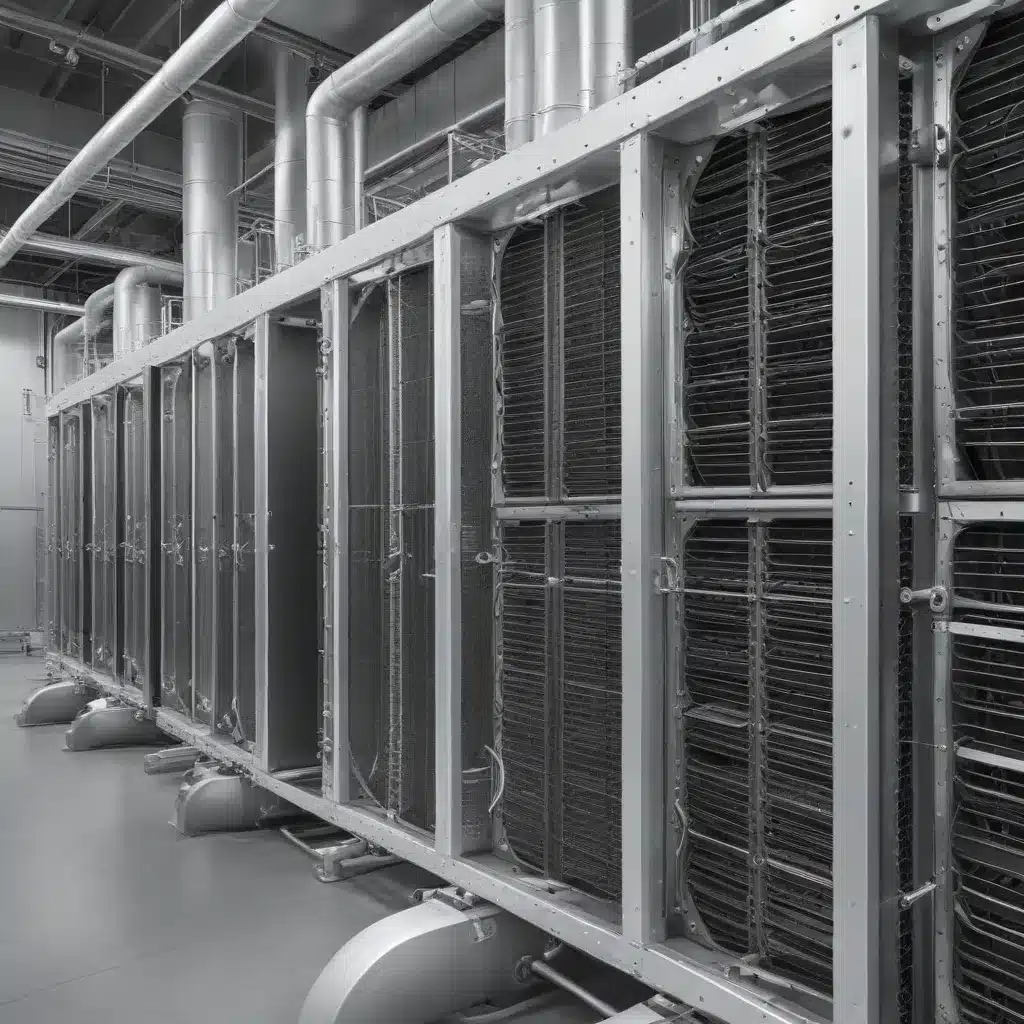
Optimizing Air-Cooled Heat Exchanger Performance for Industry Efficiency
In today’s rapidly evolving world, where energy efficiency and sustainability are paramount, the design and engineering of air-cooled heat exchangers have become pivotal in driving industrial progress. As a seasoned expert in this field, I’m excited to share practical insights and in-depth strategies that can help unlock the secrets to designing energy-efficient heat exchanger systems for a wide range of industrial applications.
Mastering the Fundamentals of Air-Cooled Heat Exchanger Design
At the heart of any effective air-cooled heat exchanger lies a deep understanding of the underlying principles of heat transfer. Whether you’re working with simple plate-fin configurations or more complex shell-and-tube designs, grasping the intricacies of conduction, convection, and radiation is essential for optimizing thermal performance.
One of the fundamental considerations in air-cooled heat exchanger design is the selection of the appropriate materials. Factors such as thermal conductivity, corrosion resistance, and ease of fabrication all come into play when choosing the right materials for your application. For instance, aluminum is a popular choice due to its excellent balance of thermal properties and cost-effectiveness, while copper offers superior conductivity but may be more challenging to machine.
Explore our website to discover the latest advancements in air-cooled heat exchanger materials and how they can impact the overall efficiency of your system.
Enhancing Thermal Performance through Innovative Geometries
Beyond material selection, the geometry of the heat exchanger plays a crucial role in maximizing its thermal efficiency. Designs that incorporate features like finned surfaces, louvered fins, and pin-fin arrays can dramatically increase the surface area available for heat transfer, ultimately improving the overall cooling capacity.
Table 1: Comparison of Common Heat Exchanger Geometries
| Geometry | Thermal Performance | Pressure Drop | Manufacturing Complexity |
|---|---|---|---|
| Plate-Fin | Moderate | Moderate | Low |
| Shell-and-Tube | High | High | Moderate |
| Finned Tube | High | Moderate | Moderate |
| Plate-Fin-and-Tube | Very High | High | High |
As you can see, the trade-offs between thermal performance, pressure drop, and manufacturing complexity must be carefully weighed when selecting the optimal heat exchanger geometry for your specific application. By leveraging computational fluid dynamics (CFD) simulations and extensive testing, design engineers can continually refine and optimize these geometries to push the boundaries of energy efficiency.
Optimizing Air-Flow Management for Maximum Efficiency
Ensuring efficient air-flow through the heat exchanger is another critical aspect of design optimization. Factors such as fan selection, duct design, and air-flow distribution can have a significant impact on the overall system performance.
One effective strategy is the incorporation of variable-speed fans, which can adapt their output to match the varying thermal loads encountered in industrial processes. By precisely controlling the air-flow, these systems can minimize energy consumption while maintaining the desired cooling capacity.
Additionally, the design of the air-flow ducts and plenums plays a vital role in minimizing pressure drops and ensuring uniform air distribution across the heat exchanger surface. Computational fluid dynamics (CFD) simulations can be invaluable in modeling and optimizing these air-flow pathways for maximum efficiency.
Maintaining Peak Performance through Proactive Maintenance
Designing an energy-efficient air-cooled heat exchanger is only half the battle; ensuring its long-term performance through proper maintenance is equally crucial. Regular inspections, cleaning, and preventative maintenance can help maintain optimal heat transfer, minimize energy consumption, and extend the overall lifespan of the system.
Key maintenance tasks may include:
- Cleaning and brushing the fin surfaces to remove accumulated dirt and debris
- Inspecting and replacing worn or damaged components, such as fans, bearings, and seals
- Monitoring and adjusting the air-flow balance to maintain uniform distribution
- Performing regular vibration analysis to detect and address any issues with rotating machinery
By adhering to a comprehensive maintenance program, you can maximize the energy efficiency and reliability of your air-cooled heat exchangers, ultimately reducing operating costs and environmental impact.
Embracing the Power of Digitalization and Smart Technologies
In the digital age, the integration of advanced technologies into air-cooled heat exchanger design and operation is revolutionizing the industry. From predictive maintenance algorithms to real-time monitoring and optimization, these innovative solutions are empowering plant managers and engineers to achieve new levels of efficiency and sustainability.
Predictive Maintenance Strategies:
By leveraging machine learning and data analytics, predictive maintenance algorithms can analyze operational data to anticipate potential failures and proactively schedule maintenance. This approach helps minimize unplanned downtime, optimize resource allocation, and extend the lifespan of critical heat exchanger components.
Intelligent Monitoring and Control:
The integration of sensors, connectivity, and intelligent control systems enables real-time monitoring and optimization of air-cooled heat exchanger performance. This data-driven approach allows for precise adjustments to air-flow, fan speeds, and other parameters to maintain peak efficiency even as operating conditions fluctuate.
Digital Twins and Simulation-Driven Design:
The creation of digital twins, or virtual representations of physical heat exchanger systems, empowers design engineers to simulate and test various configurations before physical implementation. This simulation-driven approach can accelerate the design process, identify optimal geometries, and validate performance characteristics, ultimately leading to more energy-efficient and sustainable heat exchanger solutions.
Embracing the Future of Sustainable Cooling
As the global focus on environmental stewardship and energy conservation intensifies, the role of air-cooled heat exchangers in driving sustainable industrial progress cannot be overstated. By continually refining design methodologies, leveraging advanced materials, and integrating cutting-edge digital technologies, we can unlock new frontiers in energy-efficient cooling solutions.
At Air Cooled Heat Exchangers, our team of seasoned experts is dedicated to pushing the boundaries of what’s possible in the realm of thermal management. Whether you’re an industrial manufacturer, a facility manager, or an HVAC professional, we are here to guide you through the evolving landscape of air-cooled heat exchanger design and help you achieve your sustainability goals.
Contact us today to learn more about our comprehensive services and how we can help you unlock the secrets of energy-efficient heat exchanger design for your unique application.

